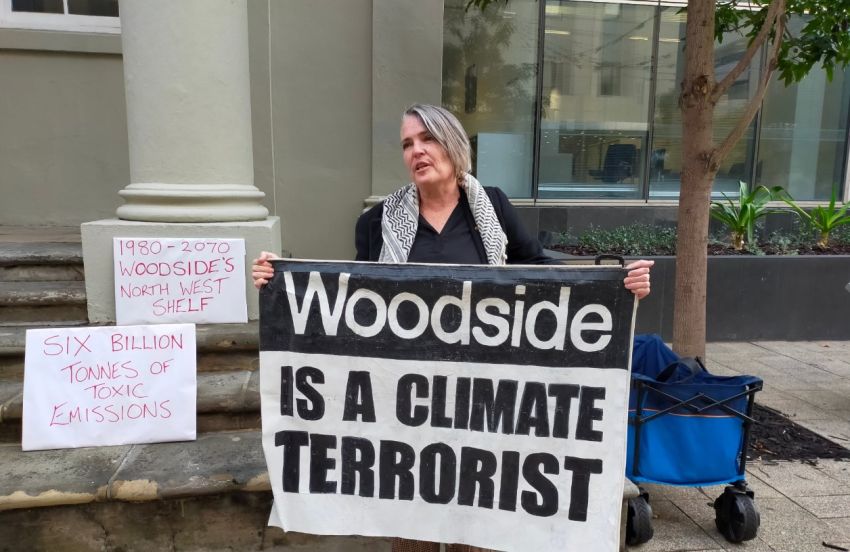
Labor’s 2035 greenhouse gas emission reduction target of 62–70%, announced on September 18, is not only inadequate, but part of a cruel deception that it accepts that climate change is real.
The target may formally satisfy one of the legal requirements of the Paris climate accords and it may bolster Australia’s bid to host the COP31 climate summit in 2027, but it does not take into account the huge amounts of greenhouse emissions from the burning of exported fossil fuels.
Australia is the world’s third-largest fossil fuel exporter, after Russia and the United States. However, because Australia exports so much coal, it is the second-largest exporter of carbon dioxide emissions, according to Murdoch University’s Professor Bill Hare.
Labor’s 2023 domestic target is also grossly inadequate and the official calculation of emission reductions has long been exposed by The Australia Institute (TAI) as an exercise in “creative accounting”.
“In order to limit warming to 1.5 degrees Celsius, global emissions must at least halve by 2030,” said Richard Denniss, Executive Director of TAI, on September 18. “A cut of at least 75% by 2035 is what was required and it’s a missed opportunity for the government to show it is serious about climate change.
“In a short period of time, we have seen the government extend the North West Shelf, release the grim climate risk report and announce a non-ambitious climate target. The government can’t have it all ways, and if it is serious about meeting climate targets, it will stop approving coal and gas.”
These approvals are also a betrayal of Australia’s Pacific Island neighbor states, all of whom are already imperiled by rising sea levels.
During the Pacific Island Forum summit, over September 8–12, Vanuatu’s climate minister, Ralph Regenvanu, condemned Australia’s approval of Woodside’s North West Shelf gas project. “The advisory opinion of the International Court of Justice made it clear that going down the fossil fuel production expansion [path] is an internationally wrongful act, under international law,” he said.
Australia cannot remain the world’s second biggest exporter of carbon emissions and claim to be working for a safe climate. Yet, this is the cruel deception it and nearly all the top 20 fossil fuel exporting countries are perpetrating.
The production of fossil fuels currently being planned by governments of 20 major greenhouse gas emitters will deliver twice as much greenhouse gas pollution as the 1.5ºC goal allows, according to the 2025 Production Gap Report.
According to the government's Climate Change Authority, Australia’s greenhouse emissions have declined by 27% since 2005. Most of this is based on estimates of how much carbon emissions may have been reduced, or absorbed, by land use changes.
However, according to Dr Emma Lovell, excluding that and measuring actual emissions in energy generation, mining, industry, transport and agriculture, the reduction since 2005 is just 3%.
Labor’s approval of 31 new and expanded fossil fuel projects since 2022 also means real domestic greenhouse gas emissions will rise, through fugitive emissions and the emissions from converting gas into liquefied natural gas. Nearly a fifth of Australia’s domestic emissions are created in the process of exporting fossil fuels, according to TAI research.
The new measures that Labor says will meet its new 2035 target mostly amount to subsidies and grants to private corporations. They are outlined in a report, Net Zero, and include corporate subsidies for developing carbon capture and storage (CCS), an unproven technology that scientists have criticised as an excuse to continue fossil fuel expansion. CCS may even increase emissions.
The Australian Conservation Foundation’s Gavan McFadzean said that Labor Prime Minister Anthony Albanese’s “timid target” showed that he is “more committed to the future of the coal and gas industries than he is to the safety of Australian communities and nature”.
“A target range of 62–70% falls significantly short on all measures of what’s needed, with the government’s plans preparing Australia only to meet the bottom end of the range.
“The 70% figure is greenwashing, while the plans are not there to reach it. It’s awful to see the government shrug and accept the worst-case scenarios in the National Climate Risk Assessment (NCRA) as if they are Australia’s inevitable future: Regular coastal inundation; more heat-related deaths; worse bushfires and more environmental damage.”
The independent Climate Council’s Amanda McKenzie warned that with global temperatures, already 1.3°C above pre-industrial levels, and current policies tracking toward 2.7°C warming, the NCRA projections for a 3°C warming scenario “represent Australia’s likely future without immediate course correction”.